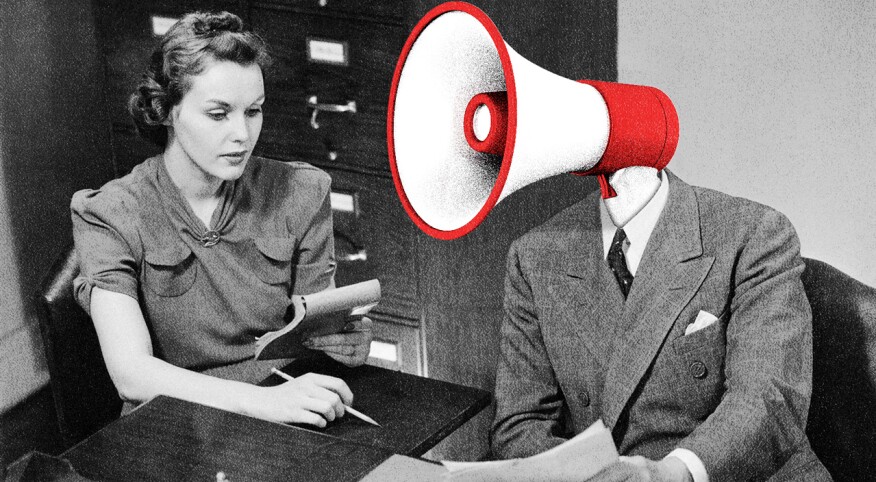Traditional management wisdom says that in any room, the person who talks the most gets listened to the most — the old squeaky wheel/grease equation.
But as a professor of psychology who researches work dynamics, I’ve built my career on understanding office power struggles. And what I’ve learned is that those who achieve leadership status often do it not by being the most vocally dominant, but by taking a more measured approach.
The next time you’re tempted to talk longer and louder than anyone else, consider these moves—the ones that will really help you command attention and respect.
Tip #1: Cut through the small talk.
In my research, I’ve found that the person who wielded the most influence in a room was the one who cut through the small talk and organized the group within the first few minutes of the meeting. In fact, the simple act of saying, “Why don’t we all go around and say our names?” was sufficient to seize a leadership role. Or, if everyone’s familiar with one another, simply stating the exact purpose of the meeting, or laying out a short and simple agenda, can put you in command.
Why? Because once you act like a leader, everything you say is viewed through that leadership lens. You won’t have to yell over people to be heard — people will step out of the way and let you speak.
Tip #2: Say it in 60 seconds.
Now that you’ve cleared the floor, what’s the best way to keep people’s attention? I follow career coach Marty Nemko’s traffic-light rule: You have about 30 seconds (when your light is green) to capture people’s attention. In the next 30 seconds, when the light is yellow, everyone is hoping you’ll wrap things up. And once that light turns red at the minute mark, forget it. You’ve skidded through the intersection into windbag territory.
Remember: Droning on inspires others to look elsewhere for leadership.
Tip #3: Keep your emails short.
We spend on average 5 hours and 52 minutes a day checking our email at work. Only about 46 percent of us are ever able to clear our inboxes. Why? Most of us operate under the misconception that when it comes to the written word, long eloquent arguments are more likely to get attention. But just like the spoken word, this is simply not the case.
The best way to increase the likelihood that your colleagues will hit reply and engage with you, instead of banishing you to their “due never” folder? Keep your emails to no more than 50 words. That’s the length top leaders go with. It’s also the exact length of this paragraph.
Fifty words take about five minutes to type, and it’s the length you can type on a phone without your fingers cramping up. If what you have to say involves more than 50 words, say it in person.

Paul Spella




